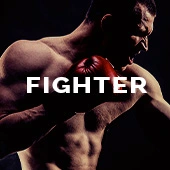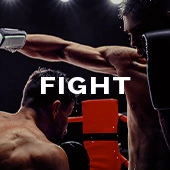By Corey Erdman
Heading into Saturday's World Boxing Super Series cruiserweight quarterfinal bout against Krzysztof Wlodarczyk, trainer Abel Sanchez told anyone who would listen that his charge, Murat Gassiev, was “the next Gennady Golovkin.”
For those who don't scour the internet for fight footage from Russia, the US-televised bout may have been their introduction to Gassiev, as the IBF champion had only ever fought on US cable twice before. But when they tuned in, they probably saw a lot they recognized. For one, they saw Sanchez, who has become one of the most recognizable and successful trainers of this era, in the corner. They also saw some things in Gassiev eerily similar to Sanchez's other, more famous fighters.
Over three one-sided rounds, the 24-year old stalked the fading ex-champion, before crumpling him with a left hook that looked a lot like the one Golovkin used to vanquish Matthew Macklin a few years back. And he set it up with a quick uppercut much like the ones Sanchez taught former light middleweight champion Paul Vaden to throw back in the 90s.
"Abel is an amazing guy and he has pushed me very hard in the gym," said Gassiev. "He's really a father figure here in the gym. I have so much respect for him and the way that he treats people. The best thing that I ever did was come here to train with Abel Sanchez. Abel has helped me so much. He hasn’t tried to change my style. He’s just gone in and made my style better. He means so much to me.”
It speaks to Sanchez's talent as a trainer, and his deep connection with his fighters, that those he trains are starting to become immediately recognizable as being from Big Bear. Sanchez grew up idolizing Emanuel Steward, whose initials he now keeps on all of his camp attire. If you watched boxing in the 80s, even if you were colorblind and couldn't see the trademark Kronk colors on a fighters' trunks, when you saw a fighter standing tall with a busy flicker jab and an arrow-straight right hand you assumed immediately he was with Steward. In Gassiev, it's plain to see elements of Sanchez's sixteen other world champions and his handiwork all over him.
“I make sure from the beginning, and if you look at any of the fighters that I have, my fighters come to fight. Go back to Terry Norris. Terry Norris came to fight. He came to beat you up. If we lost, we lost, but he came to beat you up and the people got their money’s worth. I’ve instilled that mentality on Golovkin and the other guys follow suit because they’re with Golovkin. You know, Gassiev, my IBF cruiserweight champion, he’s cut from the same mold. He comes to fight. He’s gonna hurt you,” Sanchez recently told HBO writer Sarah Deming.
Thus far, Gassiev has hurt all of his opponents, amassing 18 knockouts, and he hasn't lost, but not because he hasn't challenged himself. His last four fights have come against longtime divisional stalwarts Wlodarczyk and Lebedev, and two fellow Al Haymon-backed American cruisers in Isaiah Thomas and Jordan Shimmell. Now, by virtue of being in the WBSS, he's willingly become contractually obligated to face the very best in his division.
Gassiev is different from most of Sanchez's fighters in one way, however. Most fighters who have come to Sanchez have done so after a substantial amateur career, and some kind of establishment in the pro game as well. As Sanchez readily admits, he's never had to take a kid from nothing and build him from scratch into a champion. Instead, he's specialized in overlooked talents, fixer uppers, much like he does in his day job as a contractor. Gassiev had only a reported 30 amateur fights, and was mostly fighting journeymen with upside down records on Russian undercards as a pro. Golovkin may have been relatively unknown as well, but he was still a contender with an Olympic pedigree behind him.
“I like to believe that I'm a polisher. You know, I take a diamond in the rough that’s a good fighter and I polish him to the point where, look, I got one in the Hall of Fame now and there’s another one going in the Hall of Fame soon, after he retires. I think everyone has their calling, and I think mine was to be a polisher, to finish them off,” Sanchez told Deming.
From the moment he linked up with Gassiev, Sanchez has been talking his potential as a heavyweight, seeing for him the same trajectory his former pupil Orlin Norris took. In the past, he's compared him to Evander Holyfield, both in size and stylistically, with the desire to move forward and fight in close quarters, but the ability to box, as he did against Lebedev.
In order to truly be like Holyfield though, he'll first need to win this tournament and become the lineal cruiserweight champion before moving up in weight. After dispatching Wlodarczyk, he'll move on to face hard-hitting Yunier Dorticos in the semi-finals. Waiting on the other side of the bracket for the finals would be the winner of Mairis Briedis and current division kingpin Oleksandr Usyk. Usyk too has been pinpointed as a future threat to the heavyweight throne, having won the gold medal at the 2012 Olympics in the division already.
Sanchez is choosy when it comes to his fighters. His track record suggests that the floor for his fighters is “damn close to world champion” and the ceiling is “Hall of Famer.” It wasn't long ago that Sanchez sent Sergey Kovalev packing, and didn't really make a fuss about it.
Maybe it was because he knew he had another Russian powerhouse already—not just the next Gennady Golovkin, but perhaps the next Evander Holyfield.


